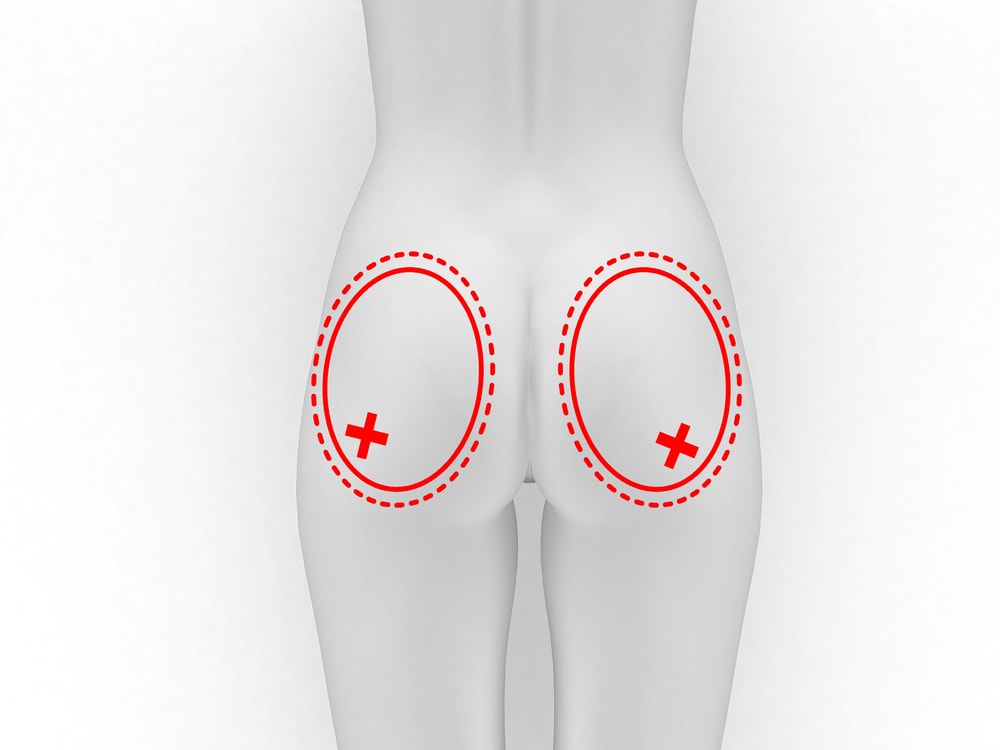Is Nerve Regeneration Possible?

Credit: Shutterstock
I have tell my patients, “I don’t do miracles”. Meaning, we provide cutting-edge medical care, and most of the time that works well and sometimes it doesn’t. However, every once in a while the results can look miraculous. So today let’s review Tanya’s sciatic nerve injury and her long-term results.
A Sciatic Nerve Injury Due to Gluteal Augmentation
There has been an explosion in surgeries to enhance the appearance of the butt. This procedure is called gluteal augmentation and it has a fairly heavy side effect profile. These problems can include (1):
- 10% chance that the surgical site doesn’t heal and breaks open
- A 5% risk of an abnormal fluid collection
- A 2% risk of infection
- A 1% chance of some injury to the sciatic nerve (usually transient)
Hence, the overall complication rate is just north of 1 in 5 patients!
Tanya regrettably had an infection and a sciatic nerve injury from her surgery. When she first came to us in 2018, she could barely walk. Meaning the nerve injury had left her unable to lift her foot at all so she needed an ankle/foot orthosis (AFO) just to get around with a noticeable limp. She had read about how we were able to inject platelet growth factors around a surgically injured nerve to break up scar tissue and provide growth factors to the nerve. As a result, we had helped many patients with surgical nerve injuries.
What does this highly precise, ultrasound-guided procedure look like? This is an example of high-dose platelet growth factors being injected around the nerve. This is the median nerve in the wrist, but the sciatic nerve procedure performed on Tanya is similar:
I’ve covered her progress in many different blogs including this one on nerve damage after surgery.
So how is she doing some 3 years since her first procedure? Here’s her report and video:
“Thank you Dr. Centeno! 🙂🙂 It’s your patient Tanya! When doctors said I would never walk again but he did not know the power of the healing hands behind you. Thank you for giving me hope when I had none and believing I would walk fully restored. I love you! I pray God bless you 1000 folks for EVERYTHING you have poured into me and others.”
Tanya sent this amazing video of herself walking perfectly in high heels!
I would also like to thank Tanya for being such a great patient! At the end of the day, for a doctor, when a patient can document their results by writing a nice note and taking a video, that makes it all worthwhile!
The upshot? Gluteal augmentation is a procedure with significant risks as Tanya knows. It’s so great to see that the procedures we performed have allowed her to get back to being able to wear heels on date night!
_____________________________
References:
(1) Sinno S, Chang JB, Brownstone ND, Saadeh PB, Wall S Jr. Determining the Safety and Efficacy of Gluteal Augmentation: A Systematic Review of Outcomes and Complications. Plast Reconstr Surg. 2016 Apr;137(4):1151-1156. doi: 10.1097/PRS.0000000000002005. PMID: 27018670.

If you have questions or comments about this blog post, please email us at [email protected]
NOTE: This blog post provides general information to help the reader better understand regenerative medicine, musculoskeletal health, and related subjects. All content provided in this blog, website, or any linked materials, including text, graphics, images, patient profiles, outcomes, and information, are not intended and should not be considered or used as a substitute for medical advice, diagnosis, or treatment. Please always consult with a professional and certified healthcare provider to discuss if a treatment is right for you.
